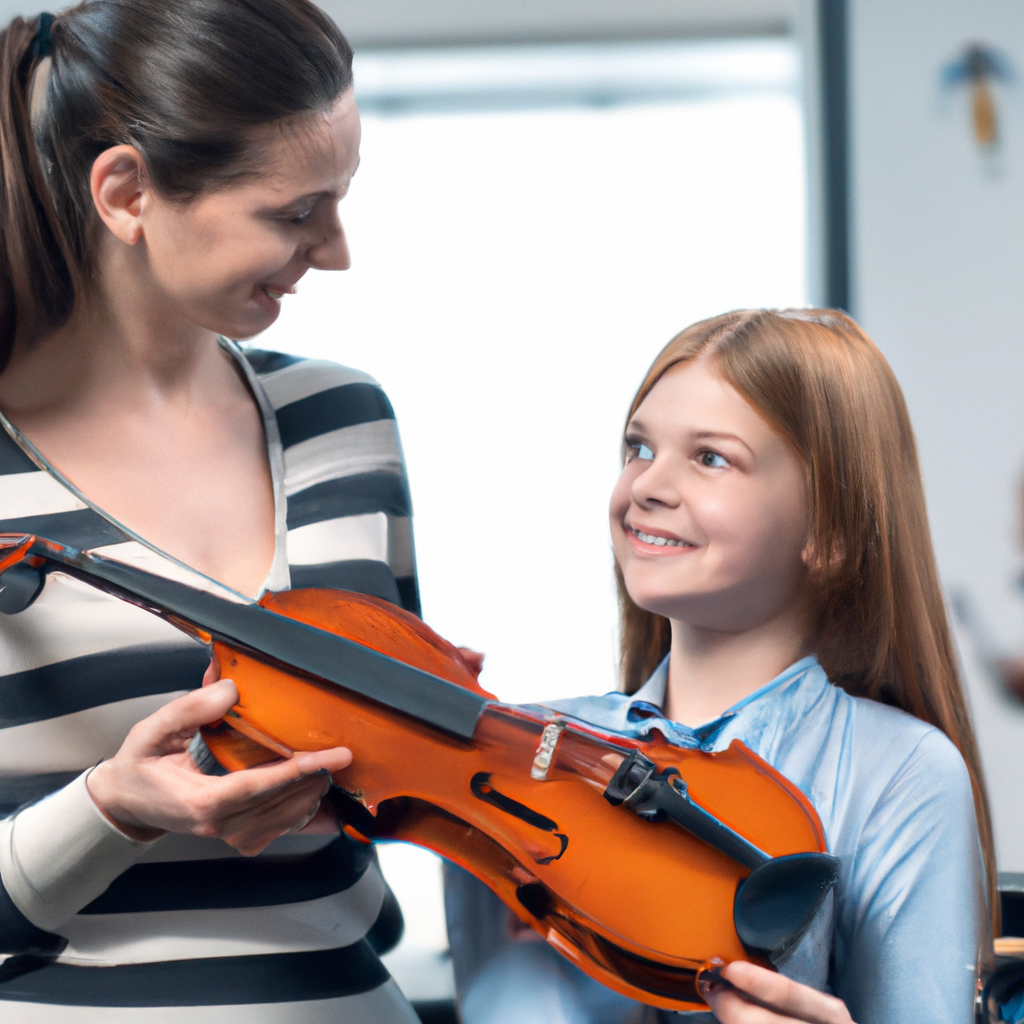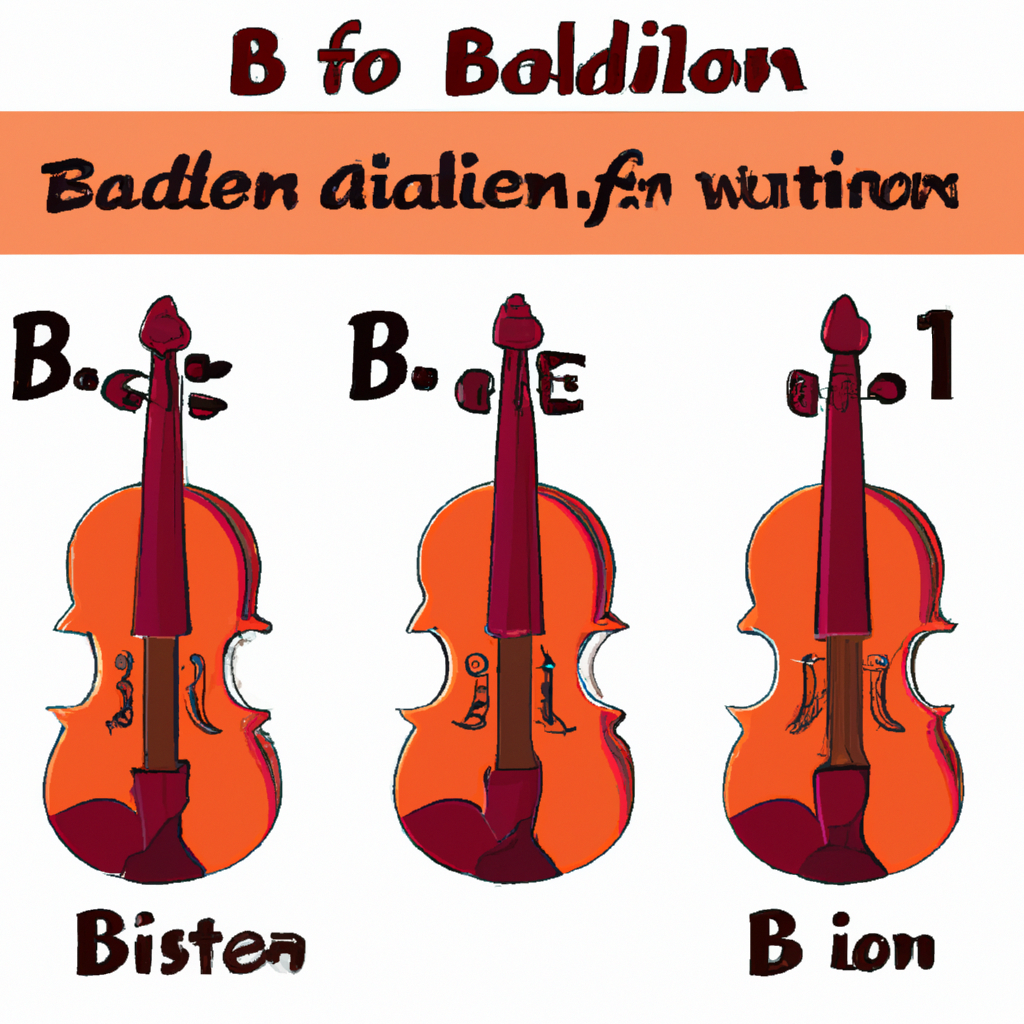
I. Introduction

A. Briefly explain the importance of choosing the right beginners violin

Choosing the right beginners violin is crucial for anyone starting their musical journey. A suitable instrument can make learning enjoyable and enhance the development of skills. On the other hand, a poor-quality violin can hinder progress and dampen the enthusiasm of beginners.

B. Mention the various factors to consider when selecting a beginners violin

When selecting a beginners violin, there are several important factors to consider. These include budget considerations, violin sizes, materials and construction, sound quality, playability and comfort, necessary accessories, renting vs. buying, seeking professional advice, and caring for the instrument. Understanding these factors will help aspiring violinists make an informed decision that suits their needs and goals.
II. Understanding Beginner Violins
A. Discuss the characteristics of beginner violins
Beginner violins are specifically designed for those who are new to playing the instrument. These violins usually have a more basic construction, which makes them more affordable. They are also designed to be durable, as beginners may be less careful with their instruments.
B. Explain the differences between beginner and advanced violins
Advanced violins are generally crafted with higher-quality materials and construction techniques, resulting in better sound quality and playability. Beginner violins, on the other hand, are more affordable and may have some compromises in terms of materials and craftsmanship.
C. Highlight the importance of starting with a suitable beginner instrument
Starting with a suitable beginner instrument is crucial for the development of proper technique and musicality. A well-made beginner violin will be easier to play, allowing beginners to focus on learning without struggling with an inferior instrument.
III. Budget Considerations
A. Discuss the range of prices for beginner violins
Beginner violins can range in price from as low as $100 to around $500. The price difference is often due to variations in materials, craftsmanship, and brand reputation.
B. Provide tips on setting a budget for a beginner's violin
When setting a budget for a beginner's violin, it is important to consider your commitment to learning the instrument. If you are unsure about your long-term dedication, it may be wise to start with a more affordable option. However, if you are serious about learning, investing in a slightly higher-priced instrument can provide better quality and longevity.
C. Explain the relationship between price and quality
While price is not always indicative of quality, it is generally true that higher-priced beginner violins offer better craftsmanship, materials, and overall performance. However, there are still affordable options that provide satisfactory sound and playability for beginners.
IV. Violin Sizes for Beginners
A. Explain the different sizes available for beginners
Beginner violins come in various sizes to accommodate players of different ages and physical stature. Common sizes include 1/16, 1/10, 1/8, 1/4, 1/2, 3/4, and 4/4 (full size).
B. Discuss how to determine the correct size for a beginner
The correct size for a beginner violin is determined by the length of the player's arm. Measuring from the base of the neck to the middle of the palm will provide an accurate measurement to determine the appropriate violin size.
C. Provide guidance on measuring for the right size
To measure for the right size violin, extend the left arm fully and measure from the base of the neck to the middle of the palm. Use a sizing chart or consult with a violin teacher or expert to determine the appropriate size based on the measurement.
V. Materials and Construction
A. Explain the different materials used in making beginner violins
Beginner violins are commonly made from various tonewoods such as spruce, maple, and ebony. These woods are chosen for their tonal qualities, durability, and aesthetic appeal.
B. Discuss the importance of solid wood vs. laminate construction
Solid wood construction is generally preferred over laminate construction for beginner violins. Solid wood violins tend to produce a warmer, more resonant sound compared to laminate violins. However, laminate violins can still be a suitable choice for beginners on a tight budget.
C. Highlight the impact of materials and construction on sound quality
The materials and construction of a violin have a significant impact on its sound quality. Well-crafted violins made from high-quality tonewoods produce a richer, more vibrant sound. Beginners should aim for a violin that offers a balanced and pleasant tone.
VI. Brand Recommendations
A. Provide a list of reputable brands for beginners
Some reputable brands for beginners include Yamaha, Stentor, Cremona, and Eastman. These brands are known for producing reliable and well-made beginner violins.
B. Discuss the advantages of choosing a well-known brand
Choosing a well-known brand for a beginner violin offers several advantages. Established brands often have a reputation for producing consistent quality instruments. They also usually provide better customer support and have a wider range of accessories available.
C. Offer tips on researching and evaluating brands
When researching and evaluating brands, it is helpful to read customer reviews and seek recommendations from violin teachers or professional violinists. Additionally, visiting a reputable violin shop and trying out different instruments can provide valuable insights into the quality and playability of various brands.
VII. Sound Quality
A. Explain the role of sound quality in choosing a beginner's violin
Sound quality is a crucial factor to consider when choosing a beginner's violin. A violin with good sound quality will inspire and motivate beginners to practice and develop their musical abilities.
B. Discuss the factors that affect sound quality in beginner instruments
Several factors affect the sound quality of beginner instruments, including the quality of materials, craftsmanship, and setup. The type of strings used and the condition of the bow also play a significant role in the overall sound produced by the violin.
C. Provide tips on evaluating sound quality when trying out violins
When trying out violins, pay attention to the clarity, resonance, and projection of the sound produced. Listen for any buzzing or unwanted vibrations. It is also advisable to try different bows and strings to assess their impact on the sound.
VIII. Playability and Comfort
A. Discuss the importance of playability for beginners
Playability refers to how easy and comfortable it is to play the violin. For beginners, a violin with good playability allows them to focus on technique and learning without unnecessary physical strain or discomfort.
B. Explain how different neck shapes and fingerboard widths can affect playability
The shape and width of the neck and fingerboard can significantly affect playability. Beginners should look for a neck shape that allows for a comfortable grip and a fingerboard width that enables easy finger placement and intonation.
C. Provide tips on testing playability and comfort when trying out violins
When trying out violins, pay attention to the feel of the neck and fingerboard in your hand. Check if the distance between the strings feels comfortable for your fingers. Test different playing positions and movements to ensure ease of playability.
IX. Accessories and Additional Equipment
A. Explain the necessary accessories for beginners (bow, case, rosin)
Beginners will need essential accessories such as a bow, case, and rosin. The bow is used to produce sound by drawing it across the strings, while the case protects the violin during transportation. Rosin is applied to the bow hair to provide friction and enhance sound production.
B. Discuss the importance of choosing the right accessories for beginners
Choosing the right accessories is essential for beginners to ensure optimal performance and protection of their violin. Low-quality bows or cases can negatively impact the sound quality and safety of the instrument.
C. Provide recommendations for additional equipment (shoulder rest, tuner)
In addition to the necessary accessories, beginners may benefit from using a shoulder rest for added comfort and support while playing. A tuner is also a valuable tool for beginners to ensure accurate intonation and tuning.
X. Renting vs. Buying
A. Discuss the advantages and disadvantages of renting a beginner's violin
Renting a beginner's violin has the advantage of lower upfront cost and flexibility. It allows beginners to try the instrument without a significant financial commitment. However, rented violins may have limitations in terms of quality and setup.
B. Explain the benefits of purchasing a beginner's violin
Purchasing a beginner's violin gives the player ownership of the instrument and allows for customization and adjustment to suit personal preference. A purchased violin can also serve as a long-term investment and be passed down through generations.
C. Provide guidance on deciding whether to rent or buy
Deciding whether to rent or buy a beginner's violin depends on personal circumstances and commitment to learning. If unsure about long-term dedication, renting is a good option. However, if there is a strong commitment to learning, buying a violin is a wise investment in the pursuit of musical development.
XI. Seeking Professional Advice
A. Discuss the benefits of consulting with a violin teacher or expert
Consulting with a violin teacher or expert can provide valuable insights and guidance when choosing a beginner's violin. They can assess your skill level, recommend suitable instruments, and help with proper setup and adjustments.
B. Explain how professionals can assist in choosing the right beginner's violin
Professionals can assist in choosing the right beginner's violin by considering your skill level, budget, and goals. They can guide you towards instruments that offer the best sound quality, playability, and overall value for your specific needs.
C. Offer tips on finding and working with a violin professional
When looking for a violin professional, seek recommendations from local music schools, orchestras, or fellow musicians. Interview potential professionals to ensure they have the necessary experience and expertise. Communicate your goals and preferences clearly to establish a fruitful working relationship.
XII. Caring for a Beginner's Violin
A. Provide tips on basic maintenance and care for a beginner's violin
Basic maintenance and care for a beginner's violin include keeping it in a suitable case when not in use, wiping it down after each playing session, and checking for any loose parts or damage. It is advisable to seek guidance from a professional for more advanced maintenance tasks.
B. Discuss the importance of regular cleaning and inspections
Regular cleaning and inspections are crucial for preserving the condition and longevity of a beginner's violin. Clean the instrument with a soft cloth and inspect it for any signs of wear, cracks, or loose fittings. Promptly address any issues to prevent further damage.
C. Highlight the impact of proper care on the longevity of the instrument
Proper care significantly extends the longevity of a beginner's violin. Regular maintenance and appropriate storage conditions prevent damage and ensure the instrument maintains its sound quality and playability over time.
XIII. Frequently Asked Questions (FAQs)
A. What is the best size violin for a beginner?
The best size violin for a beginner depends on their arm length. It is important to measure the arm length accurately and consult a sizing chart or violin professional to determine the appropriate size.
B. How much should I spend on a beginner's violin?
The amount you should spend on a beginner's violin depends on your budget and commitment to learning. It is advisable to allocate a reasonable budget that allows for a decent-quality instrument without overextending financially.
C. What brands are recommended for beginners?
Some recommended brands for beginners include Yamaha, Stentor, Cremona, and Eastman. These brands have a reputation for producing reliable and well-made beginner violins.
D. How can I test the sound quality of a beginner's violin?
To test the sound quality of a beginner's violin, play various notes across the strings and listen for clarity, resonance, and projection. Experiment with different bows and strings to assess their impact on the sound produced.
E. Should I rent or buy a beginner's violin?
Deciding whether to rent or buy a beginner's violin depends on your commitment to learning and long-term goals. Renting offers flexibility, while buying gives you ownership and customization options.
F. How often should I clean and maintain my beginner's violin?
It is recommended to clean and maintain your beginner's violin regularly. Wipe it down after each playing session and inspect it for any signs of wear or damage. Seek professional guidance for more advanced maintenance tasks.
In conclusion, choosing the right beginners violin is essential for a successful musical journey. By considering factors such as budget, size, materials, brand reputation, sound quality, playability, and professional advice, beginners can make an informed decision that suits their individual needs and goals. Regular care and maintenance will ensure the longevity and optimal performance of the instrument, allowing aspiring violinists to enjoy their musical pursuits to the fullest.